Is snacking necessarily bad for you? How can you cut down if you're trying to lose weight?
How do you stop raiding the office pantry for snacks? And why do some people crave salty snacks, while others prefer sweet treats? We put down our bag of chips to ask the experts.
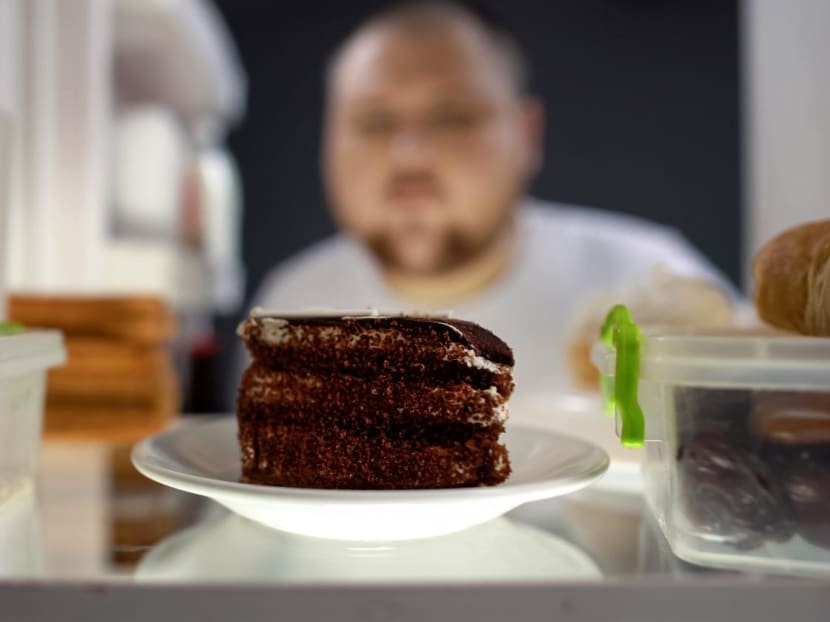
(Photo: iStock/Motortion)
It’s 3pm and like clockwork, your brain – and colleague – are nudging you to make that trip to the office pantry for coffee and snacks. Or if you’re working from home, you can’t help but be drawn to the fridge like, every five minutes.
Why are you hardwired to snack, especially when you’re trying to lose weight – and if the boss is reading this over your shoulder, you’re also trying to stay focused on your work?
It is likely that you have been “conditioning” yourself to want to snack your whole life. Well, maybe not your entire life but from the age of five onwards, according to Professor Tai E Shyong, the centre director of NUHS Centre for Chronic Disease Prevention & Management. Below five, “the regulation of food intake is very biological”, that is, your eating pattern is dictated by your hormones.
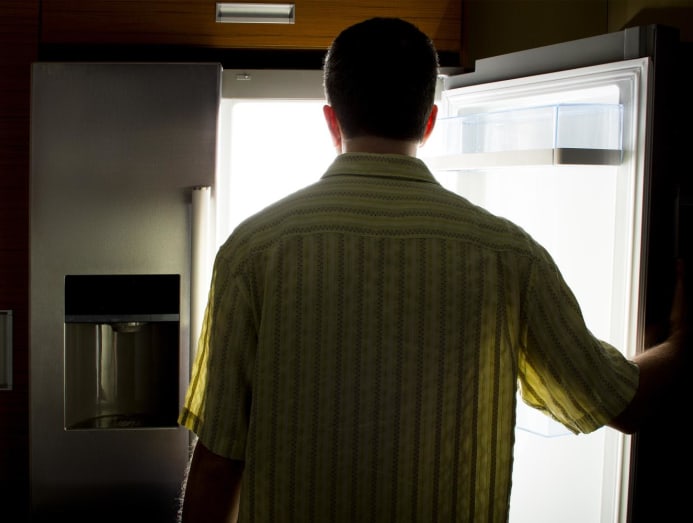
“However, once you get above that age, all sorts of things determine our eating behaviour”, such as “social interactions, pure enjoyment, boredom, stress and sleepiness”, he said.
So, unless you are very disciplined, you may have been filling your afternoons with snacks such as salted egg fish skin chips washed down with bubble tea; pork floss bun and kopi gao; matcha cake and latte; curry puff with teh tarik; or even ice cream and fries.
“Most people snack at least once or twice a day,” said Jennifer Shim, a senior dietitian from Parkway East Hospital.
WHY DO YOU FEEL THE NEED TO SNACK?
There is a myriad of factors that can make you reach for the Khong Guan biscuit tin in the pantry. Here’s a look at some of the factors that cause you to snack:
- Stress
Say you have a big presentation lined up. For days, you fret over the slides and numbers you’ve been prepping to impress your boss or client. And in your moments of stress, you may be filling up more on unhealthy snacks than proper meals – or at least finding it harder to resist snacking.
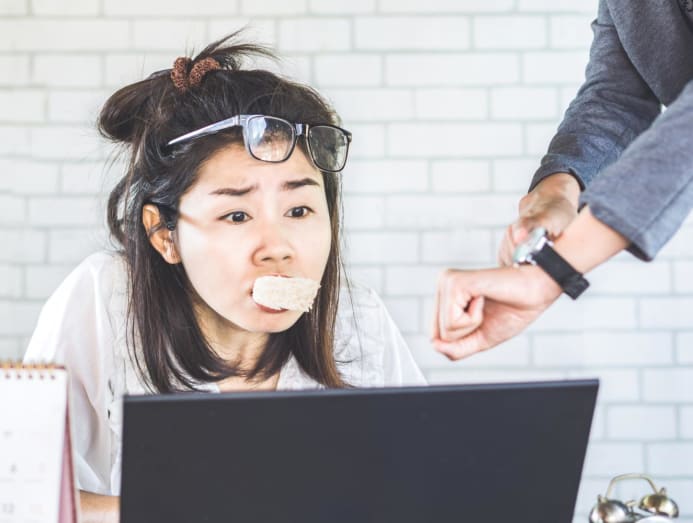
That’s because the stress hormone cortisol “leads to an increase in appetite and drives up your motivation to eat," said Toh Hui Moon, a senior clinical psychologist at National University Polyclinics. You start to crave high-fat and high-sugar snacks as such foods can “dampen stress-related responses and emotions, and act as a relief,” she said.
- Lack of sleep
Sleep deprivation is another snacking enabler, according to Dr Serene Wong, a consultant with Alexandra Hospital’s Chronic Programme, who has a special interest in sleep medicine.
“Leptin is an important hormone that signals satiety; conversely, ghrelin stimulates appetite.” And the lack of sleep has been associated with high leptin and ghrelin levels, she said.
Elevated levels of the satiety hormone are not a good thing as they signal leptin resistance; your body needs more of the hormone to feel full but it may not be producing enough of it. An increased ghrelin level is also bad news as your appetite is constantly being stimulated.
Together, they trap you in a vicious cycle of increased leptin resistance, increased appetite and weight gain, said Dr Wong.
- Skipping lunch, not eating enough or eating the wrong foods at lunch
You may be trying to cut down your food intake to lose weight, or you had to skip lunch or grab a quick bite to rush out some work. However, “eating too little can result in a higher intake of calories from snacks later on”, said Lynette Goh, the principal dietitian from National University Polyclinics.
Even what you had for lunch – a large portion of pasta, fried rice, lor mai kai, mee siam, mee goreng, carrot cake or chee cheong fun – can induce you to snack in the afternoon. That’s because these foods have a high glycaemic index and load. They raise blood sugar levels rapidly – and just as quickly, cause them to dip, said Goh. “This is why having a high-starch, high-sugar meal may leave you feeling tired.”
DOES WHAT YOU EAT FOR LUNCH MAKE YOU SLEEPY?
NO: It's a sign you're not sleeping enough
That's according to Dr Serene Wong, a consultant with Alexandra Hospital’s Chronic Programme. The sluggish, sleepy feeling after lunch, she said, is really a sign of poor quality or insufficient sleep accumulated from the night or nights before, rather than eating certain foods.
“When we have fragmented sleep due to various factors, either lifestyle or underlying sleep disorders, the tendency to fall asleep to repay this ‘sleep debt’ can occur in the form of microsleeps, which range from seconds to a full sleep period.”
YES: Your digestive system needs more energy to digest large, high-fat meals
Said Lynette Goh, the principal dietitian at National University Polyclinics. “As energy is needed to digest food, having large meals and food that is high in fat stress your digestive system, which makes you feel tired and sleepy, and affects your performance at work.”
She added: “Studies have shown that lunch sizes have an impact on performance efficiency and mood; people who had a larger lunch than normal made more errors”.
- Socialising
You may be heading to the pantry to catch up with colleagues, stretch your legs or simply out of boredom. And why not because "office pantries provide a meeting place, where staff can interact, get to know each other, build camaraderie – all important things that can improve the work environment or the individuals’ work performance", said Prof Tai.
The most important thing to do, perhaps, is recognising that it is important to create opportunities to benefit from these trips to the pantry without adversely affecting health, he added. It could mean opting for snacks that are low in calories or high in fibre in the pantry. Or having a cup of tea or coffee without sugar while you chat with colleagues.
WHY DO SOME PEOPLE CRAVE CHOCOLATE WHILE OTHERS WANT CHIPS?
The cravings for high-sugar, high-salt or high-fat foods could be responses to imbalances in hormonal or blood sugar regulation triggered by environmental factors, said Diane Seto, a senior dietitian with Mount Elizabeth Hospital.
Toh agrees; your food environment certainly plays a part in shaping what you crave. “When we eat food that tastes good, the feel-good centre of our brain is stimulated and this leads to us wanting to repeat that good feeling, which explains the increased cravings for unhealthy snacks,” she said.
Furthermore, “fast food, sugary drinks and unhealthy snacks are often easily accessible, affordable and highly advertised," she said.
As for why some people want chocolate while others hanker for chips, there are other reasons:
- Different reactions to stress
For those who like their salted egg potato chips, it “could be because stress affects the adrenal glands' ability to regulate sodium, which may lead to cravings for salt," said Seto. In addition, dehydration could also be mistaken for hunger and this may trigger salt cravings as well, she said.
Snackers with a sweet tooth could be stimulated (not in a good way) by stress hormones such as cortisol, said Seto. Sweet foods can bring about “a sensation of pleasure and comfort”, she said. In other words, you’re snacking to self-soothe.

- Number of taste buds you have
Toh has another theory: Your genes, which affect taste sensitivity and the number of taste buds you have. “It is found that people who have more taste buds may prefer salty foods. Meanwhile, individuals with lower sensitivity to sugar may need more sugar in food to feel satisfied. Adults with exposure to highly salty food have an increased preference for such food.”
- Availability of snacks
According to Dr Ng Beng Yeong, a psychiatrist from Mount Elizabeth Hospital, food cravings can be categorised into two groups: Selective and non-selective. “Selective cravings are cravings for specific foods, such as durian or fried chicken from a particular restaurant,” he said.
“A non-selective craving is the desire to eat anything; this could be due to hunger or thirst. Sometimes, drinking water may relieve the intense non-selective cravings.”
- Gender
According to Toh, “men are more likely to crave savoury food, while women are more likely to crave sweet food. Men also tend to crave different types of sweet food from women, that is, sugary drinks instead of chocolate”. “Women also report increased food cravings and a preference for sweeter food in the luteal phase of their menstruation cycle,” said Toh.
And if you’re a woman, you may already know that the strongest craving sensations tend to occur “directly before menstruation and potentially continuing into menstruation."
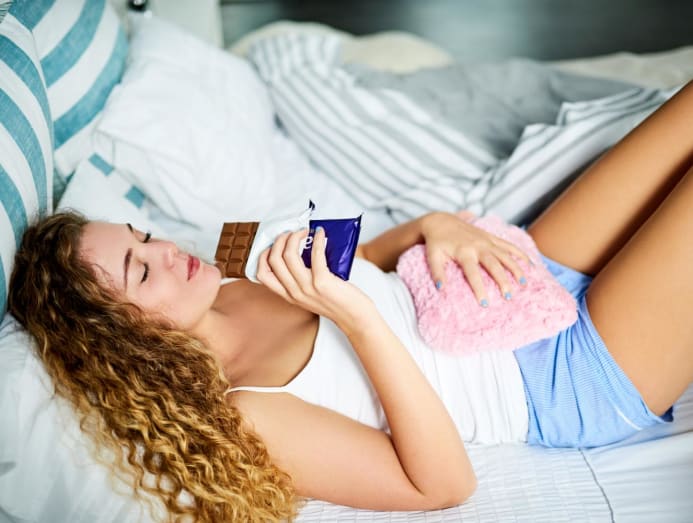
- Diet restrictions
If you have been following a low-sodium diet or have completely eliminated salt from your food, you may experience greater cravings for salted treats than the next person, said Toh.
“For instance, long-term sodium restriction in hypertensive patients will reduce their sensory threshold for sodium detection, which enhances the pleasure of salt intake, and in turn, induce greater cravings for salty food,” she said.
IS SNACKING NECESSARY AT ALL?
If snacking is behind the weight gain and diseases (we’re talking top killers such as cancer, heart disease and stroke) that come with eating high-salt, high-fat and high-sugar foods, why does it still have a place in diet plans?
“Snacks are often thought of as non-essential and something to be avoided, especially if one is trying to lose those extra kilos,” said Goh. “But smart snacking can actually boost your metabolism and prevent you from overeating at your next meal.”
For instance, if there are more than four hours between your lunch and dinner, Goh said that it is “a good idea to have a healthy, small snack”. “This would help with better blood sugar control and prevent hunger pangs, which could lead to overeating and snacking on high-fat snacks.”
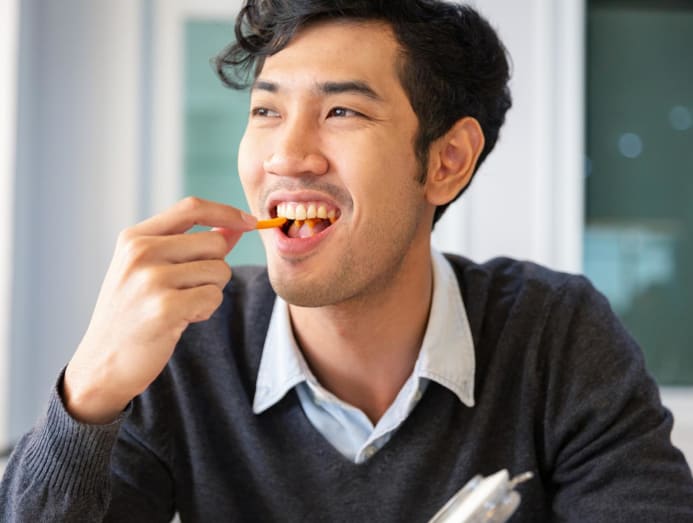
Shim also agreed that snacking can be a good practice. “Snacking can help to boost energy levels at work, especially when you start to become fatigued. It can help to curb your appetite to prevent overeating at the next meal or add nutrients to your diet, especially if you have a small appetite,” she said.
In fact, those trying to gain muscle mass will want to snack often and complement it with the “requisite amount and type of exercise” to avoid losing muscle mass, said Prof Tai.
HOW TO MINIMISE SNACKING
If there is no need for you to snack or you’re trying to lose weight, here are some ways to keep your hands off the kueh and other tempting afternoon treats:
- Eat a satiating lunch
It pays to have a satiating lunch, said Seto, that is filled with lean protein and fibre from vegetables and whole grains to avoid the sudden rise and fall of blood sugar levels that can contribute to cravings later on.
“An example would be brown rice (25 per cent) with leafy vegetables and fruits (50 per cent) and some lean chicken, fish or meat (25 per cent),” she said, advocating the Health Promotion Board’s My Healthy Plate portion guidelines.

- Beat boredom
Your cravings could be due to boredom or habit, said Shim. If so, keep yourself busy by moving away from your task. “Take a walk or switch to another task before coming back to your work,” she said.
“If you’re truly hungry, pick a healthy snack containing fibre or protein, such as a piece of fresh fruit, a small tub of low-fat yoghurt, a handful of unsalted nuts, or wholegrain crackers with low-fat cheese,” said Seto.
If you’re just experiencing cravings, try to distract yourself by doing something non-food related, like light exercise. “Exercise helps the body regulate hormone levels and can reduce the cravings,” said Seto.
- Drink up
Sometimes, hunger is confused with thirst, said Shim, who suggested low-caloric flavoured drinks such as fruit-infused water to help curb your cravings if you're not a fan of plain water. Or simply have a cup of hot tea, said Seto.
HOW TO SNACK SMART
What many Singaporeans enjoy are often snacks that are deep-fried or contain a lot of refined sugars, said Prof Tai. "People are often shocked that a cup of bubble tea with pearls contains the same amount of carbohydrate as a bowl of rice. So, it’s not really a snack — it is actually a full meal."
Dietitians Shim and Seto share their tips on how to enjoy Singaporeans’ favourite snacks with a little less guilt:
|
SNACK TYPES |
IF YOU MUST, OPT FOR: |
ALTERNATIVES: |
|
Bubble milk tea |
|
Small tub of plain, low-fat yoghurt with a piece of fruit. Why: Much lower in refined sugar and saturated fat but higher in fibre. |
|
Potato chips and other kinds of deep-fried crackers |
|
Why: Lower in calorie, saturated fat and sodium contents but higher in fibre. Nuts are also high in unsaturated fat, which is good for blood cholesterol.
|
|
Chocolate bars and desserts |
Why: Dark chocolate is higher in antioxidants, lower in sugar and does not produce such a sharp rise in blood sugar and insulin levels as milk chocolate. |
DIY chocolate avocado mousse by blending ripe avocado with unsweetened cocoa powder and chilling it. Why: Lower in calorie, saturated fat and sugar contents but higher in fibre. |
|
Baked treats such as pastries, croissant, muffin, cake and doughnut |
|
Wholegrain, multigrain or sourdough toast with a spread of nut or seed butter, plus a handful of berries. Why: Lower in calories, saturated fat and refined sugar, but higher in fibre. |









